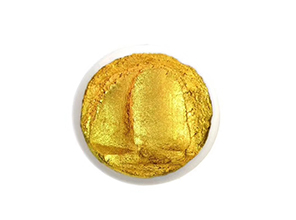Shen Zhen Esong Technology Co., Ltd.
Contact: Miss Cui
Mobile: 18926475200
E-mail: 1204047160@qq.com
Address: Building B, Kaixin Industrial Park, No. 52, Langyue Road, Tangxiayong Community, Yanluo Street, Baoan District, Shenzhen
Pearlescent ink is suitable for various printing methods, but various printing processes will have a certain impact on the quality of printed products. In order to ensure the printing quality, the printing process should match the performance of the pearlescent ink. For this reason, it is necessary to put forward some requirements for the printing process to meet the performance of the printing ink. For example, in the pearlescent offset printing process, the printing speed is faster and the ink viscosity is required to be small. In order to produce the pearlescent effect, when the pearlescent pigment particle size is larger, the transfer effect of the ink roller is not very good, the speed is fast, and the friction between the ink rollers is too large. It is easy to grind the flake pigments, and the pearlescent effect cannot be displayed. If the vehicle speed is too slow, stacking roller failure will occur; in order to pursue the flashing effect, when the pearlescent pigment has a larger particle size, in order to increase the fluidity of the ink, the printing ink will become thinner, and the drying will be too slow, which will affect the printing speed and be forced to stop. This is a thorny problem in offset printing. Pearlescent Pigment
In the pearlescent ink gravure printing process, although the surface of the printed matter has enough luster and a large amount of pearlescent pigments, it is difficult to present the pearlescent glitter effect. This is because in the printing plate of the engraving cylinder, only the finer and weakly reflective pearlescent powder is transferred to the substrate, while the larger flake particles are still retained in the grooves of the printing plate, and the pearlescent pigment is transferred to the printing plate. If the weight on the paper is not enough, it is difficult to give off a flashing effect.

The screen printing process requirements of pearl ink are also different from other ink printing. In order to match the printing process with the performance of the ink, when the particle size of the pigment in the pearlescent ink is larger, it has more multi-faceted reflection performance, which will form a very uniform and strong diffusion, resulting in a good pearlescent luster.
But pay special attention when selecting the mesh number of the screen, the aperture of the screen is related to the particle size of the pearlescent pigment used in the printing ink. In order to enable the ink to pass through the printing plate and leak onto the substrate without blocking the screen on the screen, it is generally required that the screen aperture should be 1.5 to 2.5 times larger than the larger particles of the pigment, but it is definitely not a screen. The larger the hole, the better, because a screen with a too low mesh will affect the accuracy of the graphics, and the printed image will be too rough, so the number of meshes should be appropriate. The manufacturer of the pearlescent ink should indicate the particle size of the pearlescent pigment in the packaging of the ink product, so that the user can refer to it when choosing. Generally, it can be concluded from experiments that the ink prepared by pearlescent pigments with a particle size of 20-180μm should use 40-60 mesh/inch mesh, which can print some products that require low precision. If the pearlescent particle size is 5-100μm, the ink prepared by pigments can choose 60-100 mesh/inch mesh, which can print some finer prints. Pearlescent pigments, color changing pigments, fluorescent pigments
According to relevant data analysis: the percentage concentration (quality) of mica-titanium pearlescent pigment in the ink of different printing methods is also quite different, and the content in screen printing is lower. The content of screen printing ink is 8%-15%; the content of gravure printing ink is 15%-25%; the content of flexographic printing ink is 15%-25%; the content of offset printing ink is 30%. Therefore, the use of screen printing will reduce production costs.
All in all, mica titanium pearlescent pigments are a new concept of optically color-changing pigments. They have a broad development space. With the deepening of research, they will continue to reduce production costs and create a broader path for the widespread application of mica titanium pearlescent pigments in the near future. , To create more convenience for users to choose products and use.

Mobile station

Wechat QR code
Contact: Miss Cui
Mobile: 18926475200
E-mail: 1204047160@qq.com
Address: Building B, Kaixin Industrial Park, No. 52, Langyue Road, Tangxiayong Community, Yanluo Street, Baoan District, Shenzhen